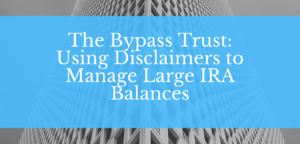Bond Risks and How Bond Funds Deal With Them
Bond Risks and How Bond Funds Deal With Them
A bond is a promise. In return for the money lent to a corporate or governmental borrower, the borrower pledges to make periodic payments of interest at a fixed rate and to repay the original loan after a set period of time. Both the date at which the principal is scheduled for return and the time remaining to that date is known as the bond’s “maturity.”
When a person buys a bond at its issue, holds it to maturity, and the issuer keeps its promises, there is no risk.
Most bonds, however, are not treated that way. Bonds are issued by all kinds of companies and agencies, held in large portfolios—including thousands of mutual funds—and traded in markets around the world. Bond risk arises from the workings of these markets. It comes in two principal forms.
Credit risk
Credit risk refers to the financial soundness of the issuer. Will it be able to make interest payments and return one’s principal on schedule? Credit risk varies from issuer to issuer, with U.S. Treasury securities at the top of the scale and high-yield “junk” bonds at the bottom. The more speculative the bond, the higher the yield required to attract investors.
Bond funds must state clearly what kind of bonds they hold, including the credit ratings acceptable in their portfolios. Funds lessen the impact of repayment problems on the part of any issuer by holding a large number of bonds from different issuers.
Interest-rate risk
Interest-rate, or market, risk refers to the sensitivity of bond prices to changing market conditions. Bond values move in the opposite direction from prevailing interest rates.
To see why to suppose that you own a 5% Treasury bond with a face value of $10,000 and a ten-year maturity. If the government is issuing new ten-year bonds paying 6%, investors won’t pay $10,000 to earn the $250 every six months that you’re getting when they can earn $300 for the same investment. So you would have to accept less—specifically, the amount that will make your $250 payment equal to a 6% yield to maturity: $9,256.
Of course, when interest rates fall, your bond gains in value. At 4%, for example, your bond would carry a price tag of $10,818.
Funds manage their exposure to interest-rate risk by controlling the average maturity of bonds in their portfolio. The more time remaining to maturity, the more a bond’s value will be affected by a given change in interest rates. We know that, at ten years’ maturity, a 5% bond gains $818 in value with a 1% drop in interest rates and loses $744 with a 1% rise. At 30 years the comparable figures would be a gain of $1,738 or a loss of $1,384.
Evaluating a fund
Bond funds run the gamut from very safe to quite risky. It’s important to know what you’re getting into when you invest—whether the fund you’re considering invests in government or corporate bonds and, if corporate, what credit ratings it demands. If the fund invests in foreign bonds, you’ll also have to contend with fluctuating currency values.
Remember that your total return will consist of capital gains or losses as well as interest income. A short-term fund with maturities between one and three years will limit your change in value but generally offers lower returns. A money market fund invests only in very short-term debt securities and attempts to maintain a stable net asset value. Intermediate funds with maturities from four to seven years provide a compromise between risk and potential return.
We hope you found this article about “Bond Risks and How Bond Funds Deal With Them” helpful. If you have questions or need expert tax or family office advice that’s refreshingly objective (we never sell investments), please contact us or visit our Family office page or our website at www.GROCO.com. Unfortunately, we no longer give advice to other tax professionals gratis.
To receive our free newsletter, contact us here.
Subscribe our YouTube Channel for more updates.

Alan Olsen, is the Host of the American Dreams Show and the Managing Partner of GROCO.com. GROCO is a premier family office and tax advisory firm located in the San Francisco Bay area serving clients all over the world.
Alan L. Olsen, CPA, Wikipedia Bio

GROCO.com is a proud sponsor of The American Dreams Show.

The American Dreams show was the brainchild of Alan Olsen, CPA, MBA. It was originally created to fill a specific need; often inexperienced entrepreneurs lacked basic information about raising capital and how to successfully start a business.
Alan sincerely wanted to respond to the many requests from aspiring entrepreneurs asking for the information and introductions they needed. But he had to find a way to help in which his venture capital clients and friends would not mind.
The American Dreams show became the solution, first as a radio show and now with YouTube videos as well. Always respectful of interview guest’s time, he’s able to give access to individuals information and inspiration previously inaccessible to the first-time entrepreneurs who need it most.
They can listen to venture capitalists and successful business people explain first-hand, how they got to where they are, how to start a company, how to overcome challenges, how they see the future evolving, opportunities, work-life balance and so much more..
American Dreams discusses many topics from some of the world’s most successful individuals about their secrets to life’s success. Topics from guest have included:
Creating purpose in life / Building a foundation for their life / Solving problems / Finding fulfillment through philanthropy and service / Becoming self-reliant / Enhancing effective leadership / Balancing family and work…

MyPaths.com (Also sponsored by GROCO) provides free access to content and world-class entrepreneurs, influencers and thought leaders’ personal success stories. To help you find your path in life to true, sustainable success & happiness. It’s mission statement:
In an increasingly complex and difficult world, we hope to help you find your personal path in life and build a strong foundation by learning how others found success and happiness. True and sustainable success and happiness are different for each one of us but possible, often despite significant challenges.
Our mission at MyPaths.com is to provide resources and firsthand accounts of how others found their paths in life, so you can do the same.
Saving for Retirement: 5 Steps to Building Significant Wealth
Saving for Retirement: 5 Steps to Building Significant Wealth Are you saving enough money for retirement? Do you know how much money you need to accumulate in order to retire? Are you concerned about how you should be saving for retirement? The simplicity of these questions can lead many people to believe that there is…
The Bypass Trust: Using Disclaimers to Manage Large IRA Balances
The Bypass IRA Trust: Using Disclaimers to Manage Large IRA Balances By Mary Kay Foss California CPA, December 2001Trying to fund a bypass trust can be problematic if clients only have a residence and a large retirement plan as their major assets. On the surface, a residence isn’t a good asset for a bypass trust…
Tax Break for College Tuition Payments
Tax Break for College Tuition Payments If you are writing a college tuition check, there may be a hidden tax break that will allow you to deduct a part of your college tuition payment. In order to do this, you must utilize a ‘Section 529’ College Savings Plan in one of the 26 states…
Cost-Sharing Arrangements – Appeals Court Rules Against Xilinx
Cost-Sharing Arrangements – Appeals Court Rules Against Xilinx Taxpayer loses the Xilinx Case (click this link to see the complete Ninth Circuit Court of Appeals Decision of 5/27/09) in the Court of Appeal on May 27, 2009.Subject to further appeal to the Supreme Court (which almost never happens with tax related cases), the tax benefits of…



